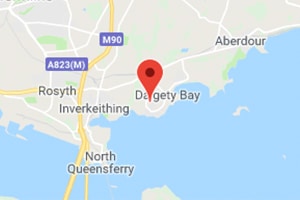Installing a consumer unit in a UK home is a crucial task, as it is the heart of the wiring system and serves as the distribution hub for electricity throughout the property. With the modernisation of electrical systems, consumer units have replaced traditional fuse boxes, providing a safer way to manage electrical circuits in residential and commercial spaces.
The location of the consumer unit is essential to ensure convenience and safety. When planning the installation, several factors must be taken into account, such as the accessibility for maintenance and inspection, adherence to UK electrical safety regulations, and the presence of any nearby hazards or areas where water and moisture could pose a risk.
In general, it is recommended that consumer units be installed in easily accessible locations, such as meter cupboards or garages, but away from damp environments like bathrooms or kitchens. Attention should also be paid to the local electrical regulations in the UK, as they might impose specific guidelines for the proper installation and positioning of consumer units within the premises.
Legal Requirements
When fitting a consumer unit in the UK, there are several legal requirements to consider. These regulations ensure the safety and functionality of the unit. It is essential to comply with these standards when installing or replacing a consumer unit.
Firstly, the consumer unit must have a minimum IP rating to protect against accidental contact with live parts and to prevent conductive or combustible materials from falling into the unit. If a gap or hole is large enough to fit a finger, it is likely not compliant with the IET Wiring Regulations.
All cables and connections to the consumer unit must be checked and tested by a qualified electrician. It is an offence to remove or replace a consumer unit without being qualified to Part P regulation standards. Additionally, tampering with the seals on the electricity meter is prohibited.
Consumer units should be easily accessible and mounted with the switches at a height of between 0.45m and 1.2m above the floor level.
In some cases, such as extensions or powering separate workshops, a second consumer unit may be required. As for the material, plastic consumer units are legal, provided they are housed in a non-combustible casing.
Following these legal requirements and partnering with a qualified electrician will ensure a safe and compliant consumer unit installation.
Choosing the Right Location
When planning to fit a consumer unit, selecting the right location is essential. It ensures easy accessibility, compliance with UK regulations, and promotes safety. Several factors influence the ideal placement of a consumer unit in a home or building.
Firstly, choose a location that is easily accessible and unobstructed by clutter. Consumer units should not be hidden behind storage boxes, as this may hinder maintenance and inspection. In addition, the unit should be positioned at a comfortable height, ideally between 0.45 metres and 1.2 metres above floor level.
Avoid installing the consumer unit in locations where it may be exposed to dampness, as moisture can lead to electrical faults or corrosion. It is recommended that the unit be placed in a dry and well-ventilated area. Additionally, avoid positioning the unit in areas with excessive heat or direct sunlight, as this may affect the performance and lifespan of the device.
Consumer units should be in compliance with Part P regulation standards, concerning electrical installations and fittings. This means that they must not be installed in prohibited areas such as bathrooms, unless specific regulations are met.
Consider the type of consumer unit needed for the installation, as this may influence the required space and location. For example, a larger consumer unit may need more space for cables and connections, whereas a smaller unit might fit into more confined areas.
Take into account future expansion or changes to the electrical system. Selecting a location that allows for easy access and additional connections if required can save time and costs in the long run. Ensuring the consumer unit’s location meets all these criteria will provide a safer and more efficient electrical installation for the property.
Important Considerations
When deciding where to fit a consumer unit in the UK, there are several important factors that should be taken into account. These considerations ensure that the consumer unit is installed safely, effectively, and in compliance with relevant regulations.
Firstly, accessibility is crucial. Consumer units should be easily reachable and installed with the switches at a height of between 0.45m and 1.2m above floor level . This allows easy access for maintenance, testing, and resetting in the event of a power outage or fault.
Another important consideration is ensuring that the consumer unit installation complies with the British Standard BS EN 61439-3. It is recommended to choose a reputable manufacturer that guarantees compliance with this standard.
Furthermore, the location of the unit must be safe and suitable for its intended purpose. It should be placed in a dry and well-ventilated area, away from potential sources of fire, moisture, or excessive heat. Additionally, it is essential to consider the routing of the electrical cables to and from the unit, as this can impact safety and efficiency.
Lastly, it is vital to remember that all cables and connections to the consumer unit must be checked and tested by a qualified electrician. Do not attempt removal or replacement unless you are qualified to Part P regulation standards. Interfering with the seals on the electricity meter is also an offence.
To sum up, fitting a consumer unit in the UK requires careful planning and consideration of accessibility, compliance with regulations, and a safe location. Always consult a qualified electrician to ensure that the installation adheres to relevant safety standards.
Common Installation Areas
When installing a consumer unit in the UK, there are a few common areas in a property that are typically used for this purpose. They are chosen based on accessibility, compliance with regulations, and ease of installation.
One popular location for a consumer unit is in the hallway, close to the entrance of the property. This area offers easy access for both occupants and professionals, in case an inspection is needed. Furthermore, it allows for quicker shutdown in emergencies.
Another common area for installing a consumer unit is the garage. Garages usually provide ample space for installation and any future upgrades. Having the consumer unit in the garage also minimises the need for lengthy cabling throughout the property, resulting in a more cost-effective installation.
Utility rooms or cupboards are also a common choice for consumer unit installation. These areas are typically dedicated to housing appliances and other electrical equipment, so it makes sense to install the consumer unit there as well. However, remember to keep the consumer unit accessible and, if possible, avoid clutter that could restrict or obstruct access to the unit.
In recent years, regulations have become stricter regarding the location of consumer units, requiring them to be installed in accessible areas, above floor level, and away from any potential fire hazards. Make sure to follow these guidelines, as well as any additional locality-specific regulations.
Safety Precautions
When fitting a consumer unit in the UK, several safety precautions must be considered to ensure it is installed properly and to minimise potential hazards. It is important to note that all cables and connections to the consumer unit must be checked and tested by a qualified electrician; attempting removal or replacement without proper qualifications is not only dangerous but also an offence according to.
The location of the consumer unit plays a significant role in safety precautions. For instance, if the consumer unit is located under a wooden staircase or within a sole route of escape from the premises, a code C3 classification is recommended, meaning that improvement is necessary.
Another factor to consider is the minimum IP (Ingress Protection) rating, which helps prevent a person from touching live parts and stops conductive or combustible materials from falling into the consumer unit. If there is a visible gap or hole large enough to fit a finger in, it is likely unsafe and non-compliant to the IET Wiring Regulations.
During the installation process, care must be taken to ensure conductors are not trapped, nor do they apply stress to the terminations when fitting the front cover of the consumer unit. Ensuring that all devices are engaged correctly on the DIN rail and that busbar tangs/fingers are located correctly in the terminal is vital for safety.
In summary, selecting an appropriate location, adhering to IP ratings, and following proper installation procedures and guidelines are crucial safety precautions to be considered while fitting a consumer unit in the UK. Always consult a qualified electrician to ensure the highest level of safety during installation and operation.
Conclusion
In the UK, choosing the right location for a consumer unit is essential for ensuring electrical safety and compliance with regulations. A well-planned installation can minimise the risks associated with electrical faults and improve the overall performance of the electrical system.
When considering where to fit a consumer unit, it is important to adhere to the guidelines and requirements set forth by BS 7671 and follow the recommendations from experienced professionals. Factors such as accessibility, avoidance of damp or combustible materials, and ensuring suitable ventilation are crucial.
Typically, consumer units are installed in locations such as utility rooms, garages, or under-stairs cupboards. However, homeowners may need to consider additional factors, such as the installation of a secondary consumer unit for extensions or detached buildings, like workshops or sheds.
Moreover, modern consumer units offer added safety features, such as RCD protection, MCBs, and other protective devices to further reduce the risk of electrical hazards.
Finally, it is crucial to hire a qualified electrician to ensure proper installation and meet the legal requirements in the UK. A professional will be able to advise on the best location and configuration for the consumer unit, maximising electrical safety and performance for the dwelling.
If you’re interested in pursuing a career as an electrician, we offer a range of electrician training aimed at both experienced electricians and new entrants.

